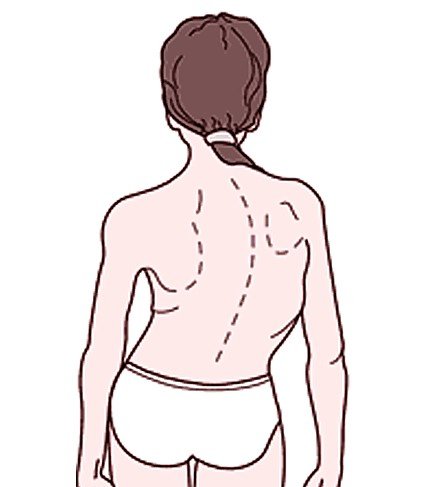Levoscoliosis
What is Levoscoliosis?
Levoscoliosis is a medical condition in which the spine becomes curved to the left side of the body. The symptoms will be identical for the general type of the scoliosis; however, there is going to be one main concern, as the heart is located on the left side as well. These concerns are related to the fact that the left-side curvature is going to press on the ribcage, leading to deformation and possible health problems for the lungs and heart. The most common segment of the vertebral column affected by levoscoliosis is the lumbar spine. When encountered in the thoracic spine for example, it was a consequence of a spinal tumor.
Symptoms of Levoscoliosis
These are the most common symptoms of levoscoliosis:
- Back pain
- Postural changes – these are noticed after the pain, that has lasted for several months, decreases
- The shoulders are at different heights
- The ribcage appears deformed
- The shoulder blade on the left side is protruding
- The anterior superior iliac spines on each side are at different heights
- The muscles on the left side contract, causing spasms to appear
- One leg may appear shorter than the other
- The body may appear as tilting on one side
Levoscoliosis Causes
 Levoscoliosis can appear under the following circumstances:
Levoscoliosis can appear under the following circumstances:
- Idiopathic – the cause is unknown and the person appears to be healthy otherwise
- Congenital – the bones of the spine have formed abnormally
- Neuromuscular – there is no control of the the nerves that go into the muscles supporting the spine (for example, in cerebral palsy or muscular dystrophy)
- Degenerative – in case of degenerated, herniated vertebral discs
- Puberty – because of hormonal changes, the spine tends to grow faster than the muscles. Plus, the muscles are weakened and levoscoliosis can easily appear.
- Poor posture – this is not a cause per say but rather a predisposing factor. The one thing you should remember about scoliosis is that the poor posture in which the body finds itself does not hurt but rather when you try to straighten it.
Treatment
The treatment of levoscoliosis depends extensively on the age of the patient, whether the growth period has ended or not and also on the curvature angle. Let’s see the most common courses of treatment that are undertaken:
Physical therapy
In case of levoscoliosis, the physical therapist will perform an initial assessment in order to determine how advanced is the curvature to the left side and use additional investigations (MRI) for confirmation. The PT program will consist of passive and active exercises that are meant to strengthen the muscles on the weakened side. Plus, there will be exercises done on the fixed stairs and plenty of mirror corrective postures to discover.
Braces
Depending on the age of the patient and the curvature angle, the doctor might either recommend a hard or a soft brace. Today, soft braces are widely preferred, as they are more comfortable to wear, while delivering a number of advantages. They have shown to reduce the amount of pain experienced by the patient and also to reduce the progression of the curve. Not only are they recommended for the initial correction but they can also help stabilize the vertebral column, preventing from left side curvature from advancing. Plus, the muscles on the weakened side are stimulated.
The FED method
This is also known as the dynamical and tridimensional therapy of scoliosis. Practically, the spine deviation is treated through the 3D fixation of the vertebral column in elongation with corrective adjustable and derotating pressure. This method originates from Spain and it has treated successfully numerous cases of scoliosis so far, including the one that is the subject here.
Scoliosis surgery
When it comes to surgery for levoscoliosis, this is only recommended in case of the curvature spine angle goes over 45 degrees. Even then, the surgery might not be able to reduce it completely and additional physical therapy will be required in order to reduce the angle even further. Physical therapy will be performed for the rest of the patient’s life, in order to prevent another surgery from happening.